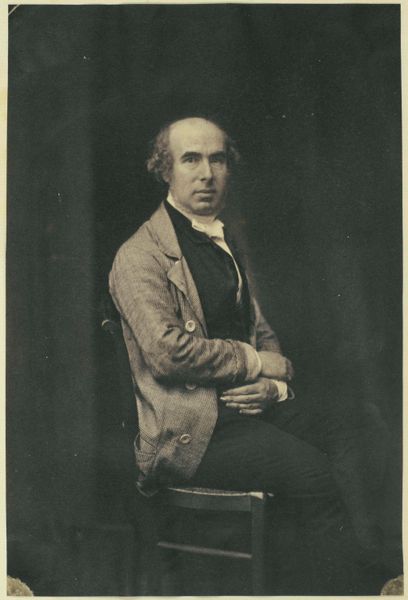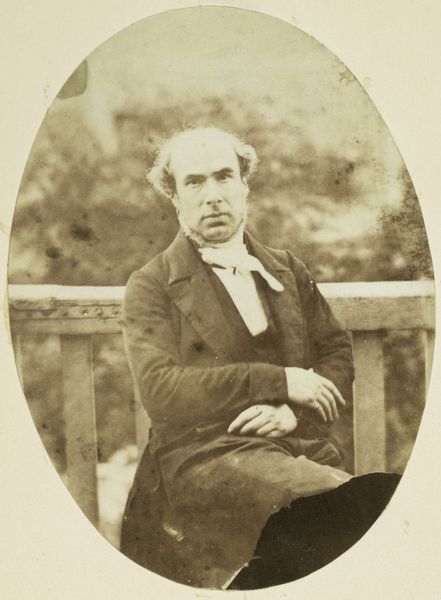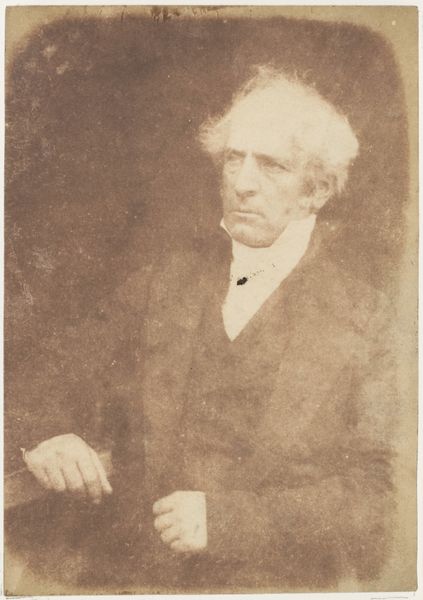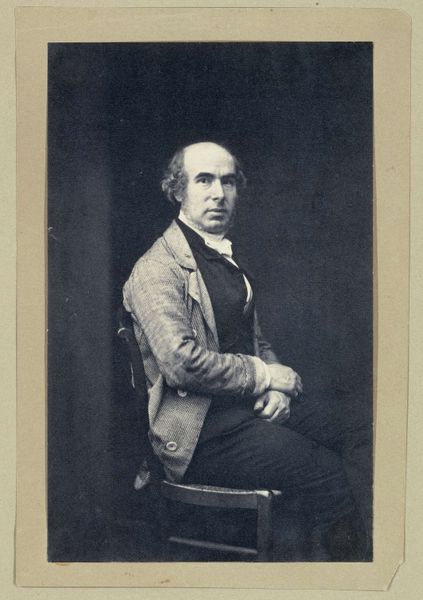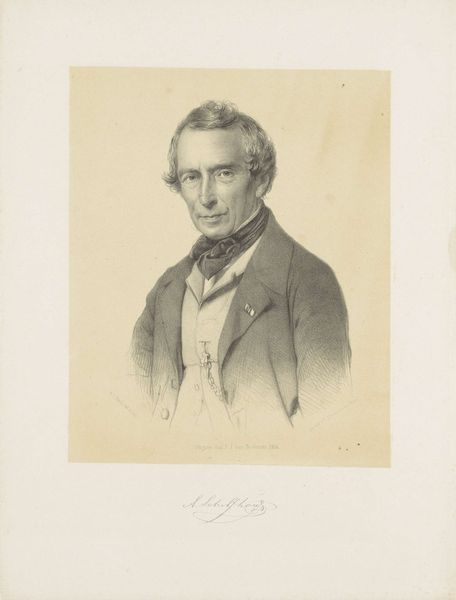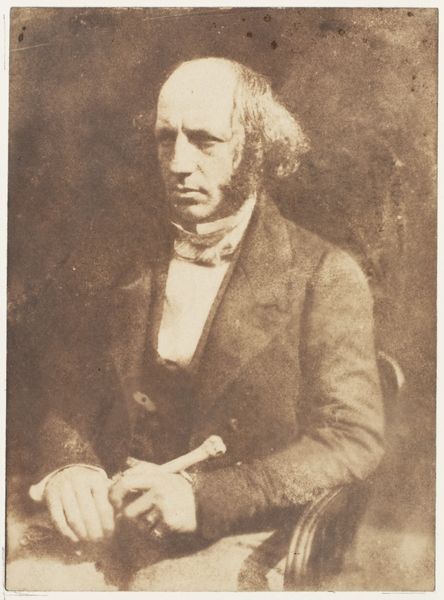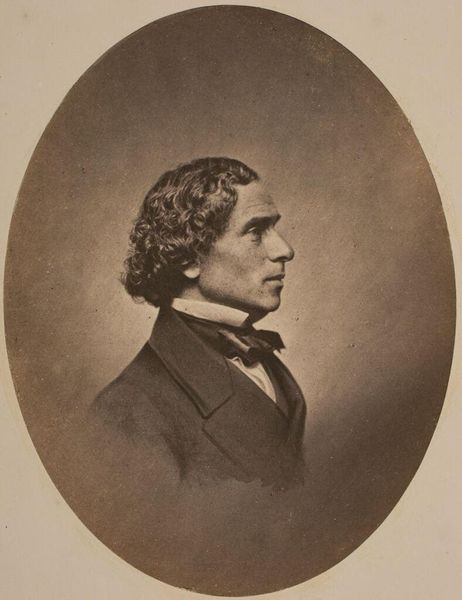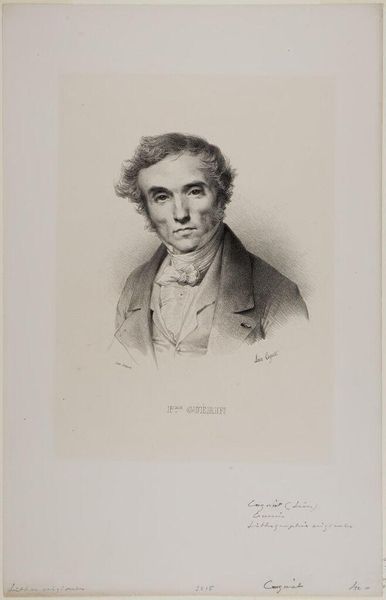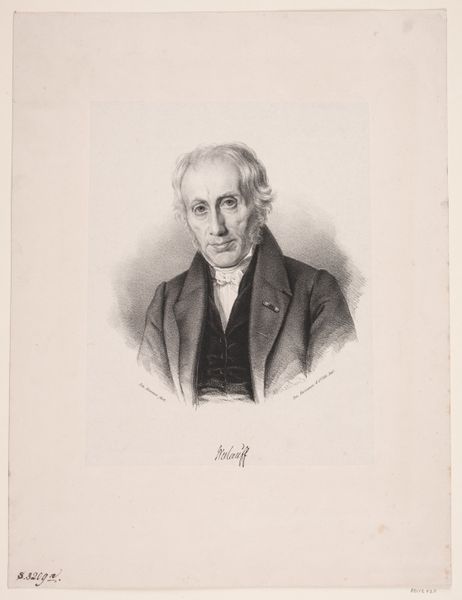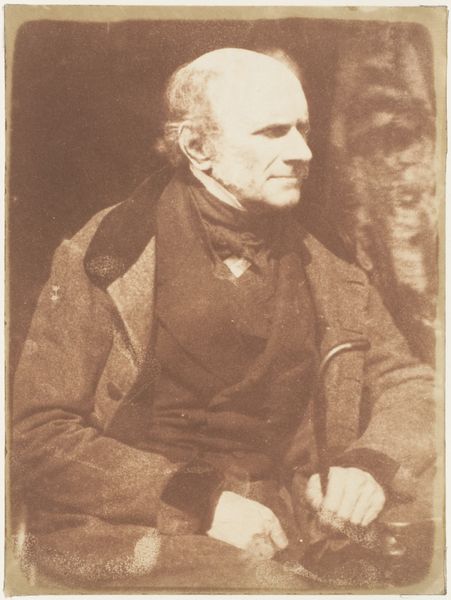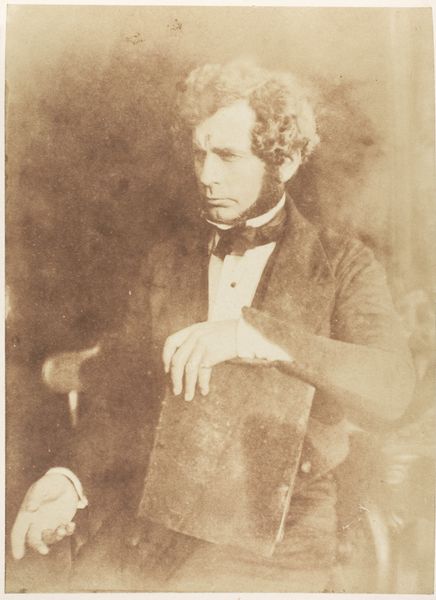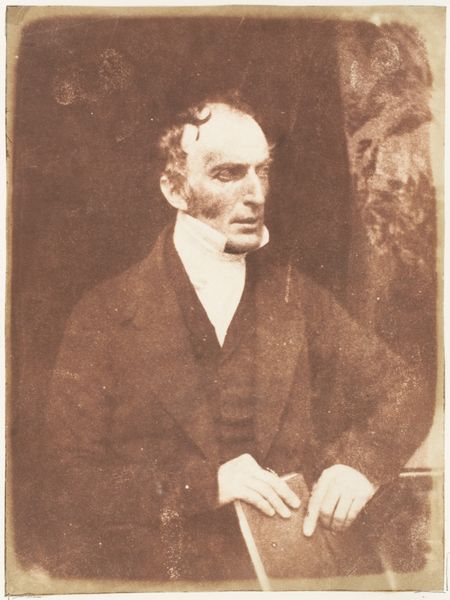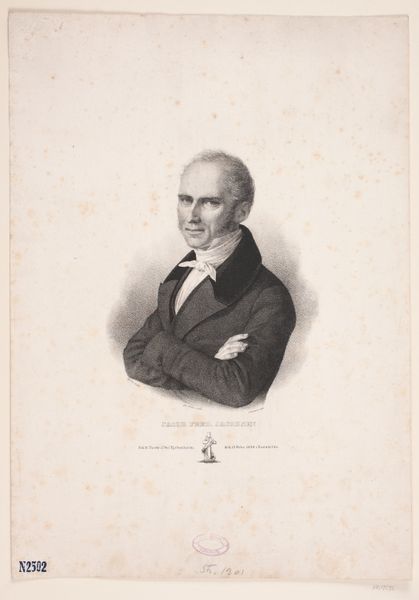
Dimensions: height 141 mm, width 114 mm
Copyright: Rijks Museum: Open Domain
Editor: This is a self-portrait by Eduard Isaac Asser, made around 1854 or 1855. It's a daguerreotype, which gives it this incredibly detailed but almost ghostly quality. I’m struck by how serious he looks, almost burdened. What do you see in this piece? Curator: Well, the first thing I notice is the social context. Photography, especially daguerreotypes, in the mid-19th century was still relatively new and somewhat exclusive. Having your portrait taken signified a certain level of social standing. Notice also the Romanticist aesthetic, which elevates the individual. Do you see it? Editor: Yes, the way he poses, almost melancholic, with his hand on his chin… it feels very deliberate and constructed. Was portraiture usually staged at the time, or is this something unique to Asser? Curator: Staging was essential, due to the long exposure times needed for daguerreotypes. But it's more than just practical necessity. This is a performance of intellect and status. Asser was a prominent lawyer and pioneer in copyright law. The image speaks to the cultural importance being ascribed to individuals during the rise of the bourgeoisie. Editor: I see it now. He is not only presenting himself but also his role in society. The legal documents beside him reinforces that message. Thank you, that perspective completely reframes how I look at the image. Curator: And I think observing your initial reaction reminded me that photography, while influenced by social status and political power, is simultaneously deeply human.
Comments
No comments
Be the first to comment and join the conversation on the ultimate creative platform.
